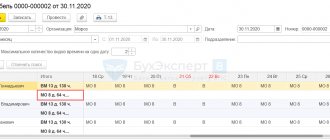general information
Information on working hours is contained in Article 91 of the Labor Code of the Russian Federation.
This period refers to the period of time when a person performs labor functions. By law, the standard duration of this time is 40 hours per week. In practice, such working hours are rarely used. Firstly, in many enterprises the production process cannot be stopped, so the work schedule there is shifting. Secondly, some categories of employees cannot work for such an amount of time, since by law they are entitled to a reduction in labor standards. These are minors, people with disabilities, etc.
However, the rules for calculating working hours stipulate that a 40-hour working week should be taken as a basis.
Time, production and service standards: what's the difference?
The main goals established in the course of labor standardization are to achieve the best ratio of the amount of labor and its remuneration, which will result in finding a fair measure of wages and the degree of worker workload.
The considered standards make it possible to carry out further calculations that determine the required labor productivity and reserves for wages. The method of their creation, adjustment, tension of norms become criteria for discussion during the conclusion of agreements on tariffs (collective agreements).
Calculation for a month
Determining labor standards allows employers to correctly set work schedules, keep records of hours worked, pay wages and distribute vacations. Knowing how to correctly calculate the standard working time, you can easily determine how many hours an employee must work. One calendar month is often taken as the billing period.
Working hours are calculated as follows:
- First you need to find out how many working days there are in the selected accounting period, and how many weekends, holidays, etc.
- Next, the number of working hours per day is calculated. At the same time, do not forget that the normal length of a working week is 40 hours. This means you calculate the number of hours per working day. Example: 40/5=8.
- The number of days in a month when a subordinate works must be multiplied by 8 hours.
An example of such a calculation could be as follows:
- Let's say there are 21 working days in June.
- The authorized employee must determine the standards by which the personnel will work.
- For this, the time standard will be calculated using the following formula: 21*8=168 hours. This is exactly how much each subordinate must work on average.
To correctly calculate working hours, you need to check the production calendar. It contains all the information about the number of work shifts for each calendar month.
Labor rationing: just something serious
- Another type of breaks are technological breaks . Quite often situations arise when an employee is forced to stop work and stand idle due to the peculiarities of technology and work organization. For example: waiting for the car to finish loading/unloading; waiting for the oven to warm up to the set temperature; removal of workers from the explosion zone during blasting operations, etc. Of course, such breaks are not typical for all positions and professions, but in some cases it is impossible to do without them.
Service time standards (service standards) are used to standardize the labor of workers serving production (transport and warehouse facilities, repairmen, etc.). The calculation of the number based on them is made using the formulas:
Quarterly calculation
It is also important to know how to calculate the standard working hours for a quarter, that is, for three months. The standard working day is 8 hours. All calculations are carried out very simply. First you need to determine what the labor norm is in each month.
Calculation example:
- Let's assume that there are 168 work hours in July. It remains to calculate the amount of time only for the next 2 months.
- There are also 168 working hours in August, and 160 in September.
- This means that the norm for the quarter is as follows: 168+160+168=496 hours.
If necessary, a similar calculation can be carried out for each quarter. Most often, company management uses the definition of the norm on a quarterly basis.
Calculation for a year

Labor rationing is an important procedure that allows you to determine the number of hours that employees are required to work. When making calculations, the calendar year is often used as the accounting period. Hours are calculated in two ways. You can use the method that is used to calculate the quarter. You just need to determine the amount of the working period for all 12 months.
Another procedure for determining the norm was established by order of the Ministry of Health and Social Development of the Russian Federation No. 588n. The calculation is carried out using the formula: 40/5*number of working days per year. After this, from the resulting number you should subtract the number of hours that the employees did not work. We are talking about reductions before the holidays.
When determining the norm for 2021 according to the billing period, the following nuances should be taken into account:
- Sunday must be counted as a day off. And it doesn’t matter how many days of rest a subordinate actually has per week - 2 or 1. For some categories of subordinates, it is possible to transfer the day of rest to another date.
- Don't forget about official holidays, which are not used in calculations.
- When a holiday falls on a day of rest, the day off is postponed. These rules do not need to be used only when calculating labor standards for January.
- The length of the working day before a holiday is always reduced by 1 hour.
When making calculations, you must follow these rules, otherwise the final number of hours will be incorrect.
Calculation of standard working hours
The procedure for calculating the norm of working time for certain calendar periods (month, quarter, year) depending on the established duration of working time per week is approved by Order of the Ministry of Health and Social Development of the Russian Federation dated August 13, 2009 No. 588n .
According to this Procedure, the standard working time for the month should be determined according to the calculated schedule of a five-day work week with two days off (Saturday and Sunday), based on the duration of daily work (shift). Thus, the length of the working week (40, 39, 36, 30, 24, etc. hours) is divided by 5, multiplied by the number of working days according to the calendar of a five-day working week of a particular month, and the number of hours in a given month is subtracted from the resulting number of hours, for which working hours are reduced on the eve of non-working holidays.
Example
Let's calculate the standard working hours for May 2014 with a normal working week. The number of working days for May is 19. At the same time, on May 8, working hours are reduced by 1 hour.
Working hours for May will be: 40 hours / 5 days. x 19 days - 1 hour = 151 hours.
The norm of working time for the year is calculated in a similar manner: the length of the working week is divided by 5, multiplied by the number of working days according to the calendar of a five-day working week in a year, and from the resulting number of hours the number of hours in a given year by which working hours are reduced on the eve of non-working holidays is subtracted days.
Working time standards for a month, quarter, half-year and year for a 40-hour, 36-hour and 24-hour work week are calculated and established in the production calendar.
If the accounting period is a quarter, determine the norm of working hours for each month, and then add them up.
When calculating the standard working hours for the accounting period, remember that this period excludes the time during which the employee is released from performing work duties while maintaining his job. This is annual leave, leave without pay, temporary disability, study leave, etc. In these cases, the standard working time is reduced by the number of hours of absence.
Example 2
In accordance with the production calendar, the standard working time for a 36-hour week for the second quarter of 2014 is 429 hours. From April 7 to April 20, the employee had annual leave.
The number of working hours that the employee will miss during the vacation will be: 36 hours / 5 days. x 10 work. days = 72 hours. Thus, the standard working time for the accounting period - quarter, taking into account vacation, should be: 429 - 72 = 357 hours. Hours worked in excess of 357 will be considered overtime.
The standard working time is also reduced when the employee is on a business trip, since the time spent on a business trip, due to its functional purpose, is equal to working time, but is not ( Letter of the Ministry of Labor of the Russian Federation dated December 25, 2013 No. 14-2-337 ).
Types of charts

The length of the working day most often depends on production needs. Therefore, it is rare that employers can provide their staff with a standard 5-day period. The most commonly used modes are:
- 24 hour shift with several days off.
- Work shift with 10 or 12 hours of work. Then the staff has more days off than planned.
- Shift is 12 hours, with alternating day and night shifts.
Note: these are not all the regimes that able-bodied citizens have to face. But, based on the specifics of some professions, a regular 8-hour shift may be disadvantageous for both management and the subordinates themselves.
https://www.youtube.com/watch?v=YtMOJEFrytA
Production calendar
In order for managers to correctly calculate labor standards, there is a special document. This is the so-called production calendar, which takes into account all working days, as well as rest days, including holidays. This document is not a normative act and therefore has no legal force.
However, it is very useful for accountants or HR employees whose responsibilities include keeping time records and calculating earnings. The production calendar can be found online and used at your discretion. Also, the law does not prohibit organizations from independently developing such documents. To do this, you can take a regular calendar and indicate working days and weekends in it in accordance with established rules.
Examples of calculating time standards using one-line standards.
Section: LIBRARY OF TECHNICAL LITERATURE Short path https://bibt.ru<<Previous page Book table of contents Next page>>
Let us give two examples of calculating time standards using one-line standards.
Fig. 30. Guide bar.
Example 1 . On a vertical milling machine model 6N12 with a table length of 1250 mm, Neph = 5.2 kW, it is necessary to process a part - a guide bar according to Fig. thirty; part material - gray cast iron Sch 16-32, HB200; part weight 5 kg; lot size 6 pcs. The part is installed directly on the table and secured with two bolts and strips.
It is required to mill: rib 1 with dimensions 20×140 mm; groove 2 dimensions 30×140 mm and ledge 3-5×30×140 mm. The allowance for size 85 mm is 3 mm.
We calculate the time norm using the table. 7-10; We record the intermediate results in the auxiliary table. eleven.
Table 11 Calculation of the standard time for processing a part according to Fig. thirty
Solution. First we use the table. 7 (code 10-FR-UST) to determine the complexity of installing and removing the part. The part is installed on the treated surface and secured to the table using strips and bolts, which corresponds to the fourth horizontal row. For a workpiece weighing 5 kg, we find the labor intensity to be 1.4 minutes.
Then we determine the complexity of each of the transitions according to the table. 10 (for processing gray cast iron). Milling of rib 1 corresponds to the 4th transition (Table 11, code 13-FR-4); in this case, milling width B = 200 mm, milling depth t = 3 mm. Since the 4th transition is not provided for the calculation of the milling width (in section A), we carry out the calculation using t = 3 mm (for the 4th transition in section B). On the horizontal line corresponding to this cutting depth, in section D we find an additional length for infeed and overrun - 12 mm. Thus, the estimated processing length will be 140+12 = 152 mm.
In the same horizontal line of section B we look for this value or one close to it. Here are the numbers 130 and 175. Choose the larger one. Then we lower the vertical down into section D until it intersects with the horizontal drawn from the 4th transition, and at the intersection we find the complexity - 2.1 minutes.
Milling groove 2 corresponds to the 8th transition. Accordingly, FIG. 30 groove depth in this case t = 30 mm. According to section B for the 8th transition, we drop to t = 32 mm and draw a horizontal line to section D, where opposite the 8th transition we find an additional length for infeed and overtravel equal to 32 mm.
The estimated processing length is 140+32=172 mm. On the horizontal line in section B we find the value 175 mm, from it we lower the vertical into section D until it intersects with the horizontal line drawn from the line of the 8th transition. The labor intensity will be 7.9 minutes.
Similarly, we find the complexity of the transition “milling ledge 3”, corresponding to the 4th transition according to the table. 10. Here the estimated processing length will be 156 mm and labor intensity will be 2.6 minutes.
The preparatory and final time is determined according to the table. 8 (11-FR-PZ): Tp.-z=16.0 min.
We determine the piece-calculation time:
Tsh.-k=14+16/6 =16.7 min.
Fig. 31. Plank.
Time to process a batch of parts Tpart = 16 + 14 × 6 = 100 min.
Example 2. It is necessary to determine the standard time for processing end 2 and groove 1 in the plank according to Fig. 31. Part material - steel 45, σв = 60 kg/mm2.
Part weight - 1 kg. Lot size 5 pcs. Machine 6N12 with table length 1250 mm; Neph = 5.2 kW. The allowance for size 170 mm is 5 mm. Processing is carried out with an end mill.
Solution. The results of calculating the time norm are given in table. 12.
Table 12 Calculation of the standard time for processing a part according to Fig. 31
In accordance with note (indication) 7 to table. 9 we find
Tpcs =5.7×1.2 =7 min.
Preparatory and final time (according to table

Tsh.-k =7+16/5=10.2 min.
Tpart=16+7×5 = 51 min.
Skip to navigation







